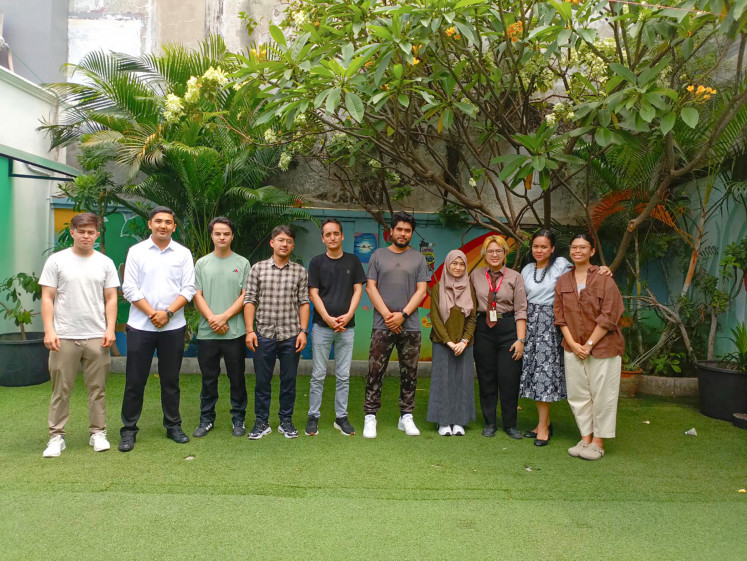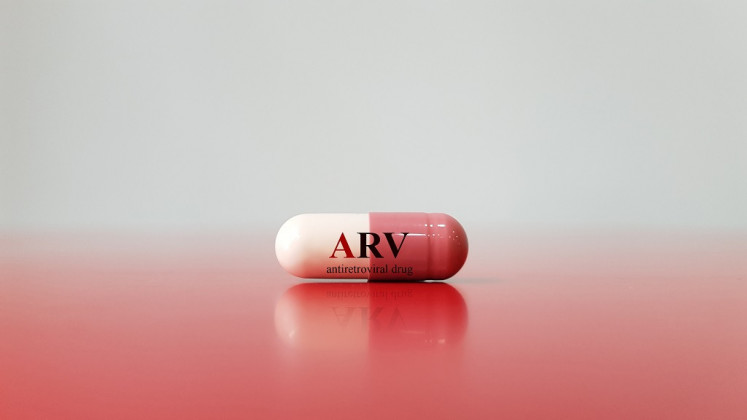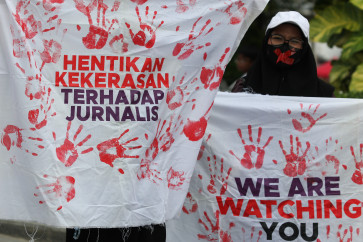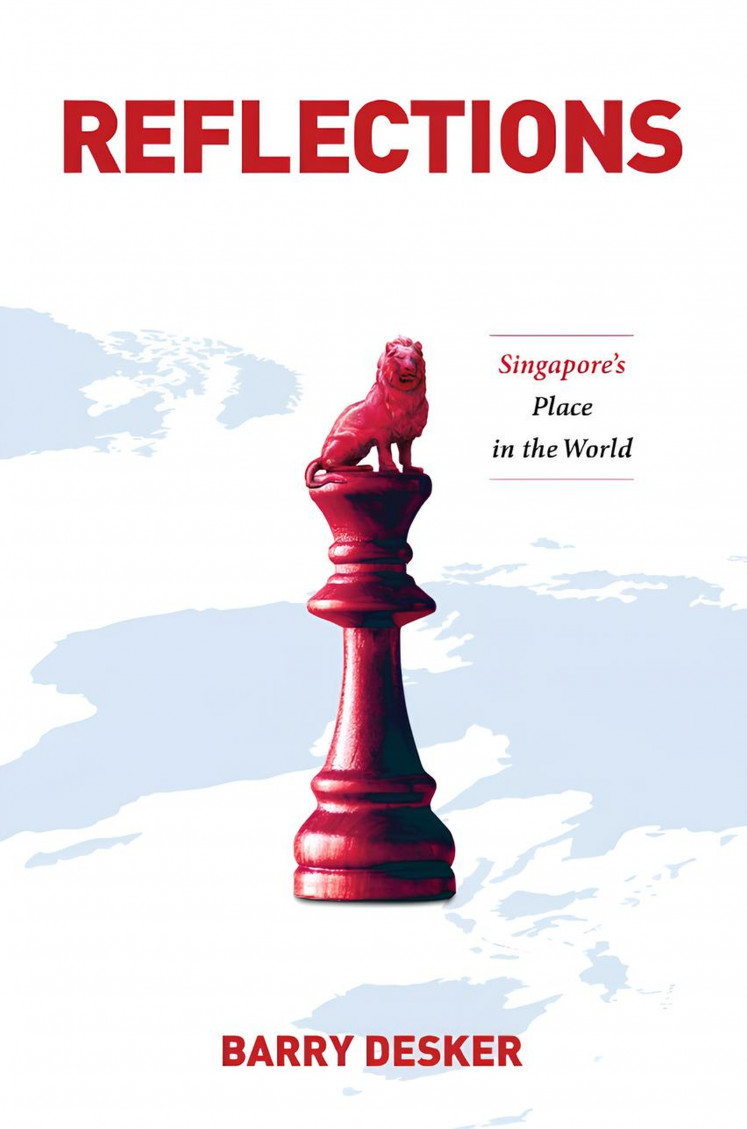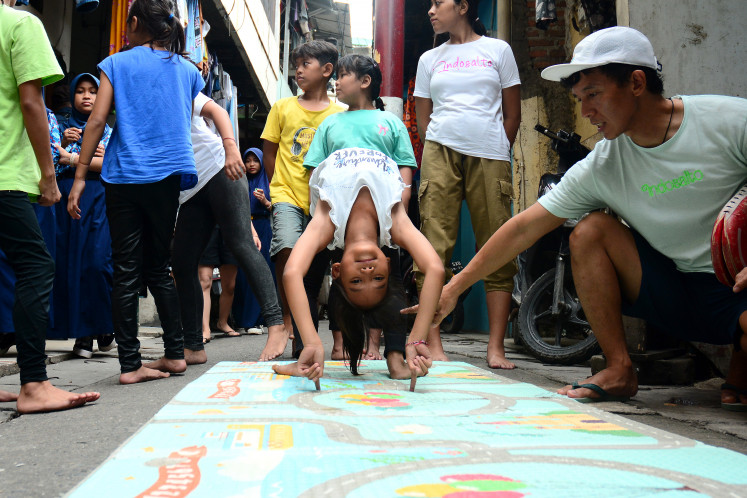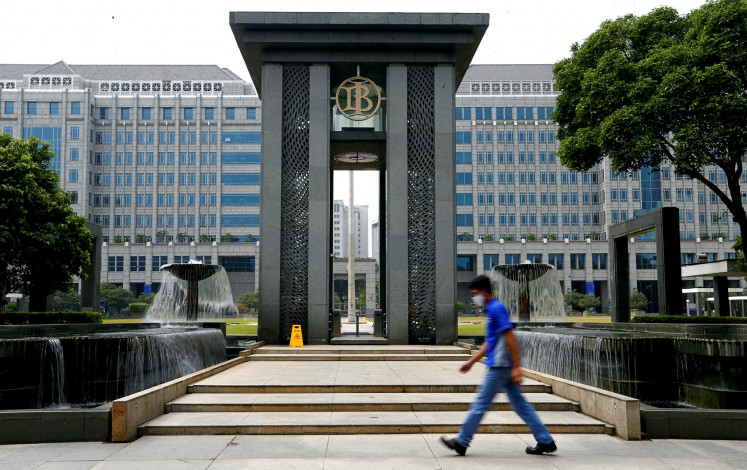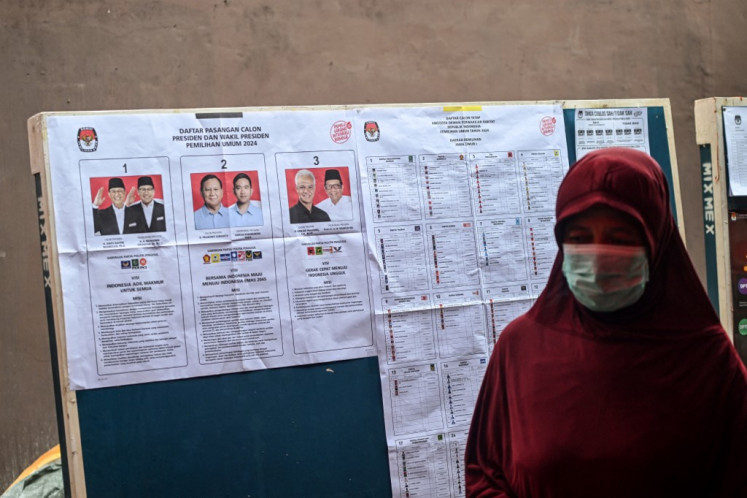Popular Reads
Top Results
Can't find what you're looking for?
View all search resultsPopular Reads
Top Results
Can't find what you're looking for?
View all search resultsFilms, photos provide inspiration in HIV fight
Visual projects provide an opportunity to connect the head and the heart to ensure that no one – particularly women and girls – is being left behind in the fight against HIV/AIDS.
Change text size
Gift Premium Articles
to Anyone
Cathy Thomas discovered during her pregnancy in 2013 that she had HIV.
At first, she could not believe it and just cried. But following the birth of her HIV-negative son Issac and with the support of her grandmother, she eventually agreed to take medication.
But after a while, she grew tired taking the medication and even began to question whether she was really HIV-positive. “[But then] I was thinking to myself, if I don’t take my medicine and I die, who will take care of my child? Who will take care of him? That is what motivated me to take my medicine,” Thomas said.
She then resumed antiretroviral treatment (ART) and went back to school, determined to create a bright future for herself and her son in her home in Morata, Port Moresby.
“ART is the best medicine. It’s not a cure but it helps you live longer,” said Thomas, now 22. “My dream now is to complete my education and take care of my son. And in the future, when he grows up, I will tell him, ‘I am your mother, and I am HIV positive. But you’re not.’”
Thomas’ story, titled I Create my Future, was part of the Young & Positive series of short films featuring three young women living with HIV. Collectively and individually, they shared their experiences of diagnosis, treatment, fear and forging a future.
This was one of the visual projects presented during the 10th Asia-Pacific Conference on Reproductive and Sexual Health and Rights (APCRSHR10). The 12th session, held before World AIDS Day, which falls on Dec. 1, is part of a series organized by the conference’s steering committee, UNFPA and the Citizen News Service (CNS).
In another presentation – a photo-voice project – the subjects were the storytellers. Called “I can, I want, I will”, the project involves nine young women and girls, most of whom had never connected with another woman or girl with HIV. Of these, three were mentors.
The six young women were given cameras and asked to capture photos that detailed living with HIV in Papua New Guinea, particularly in relation to treatment, their families and their future. A selection of photographs was then used to facilitate group discussions.
One of the photos was taken by 24-year-old Dorothy, who was diagnosed with HIV when she was 16.
“As a young person who discovered my HIV status at the age of 16, while I was in high school, I didn’t want to continue my education. I thought it was the end of my life. At that time, I was very sick, and I tried to commit suicide,” she said.
But after starting ART, she became strong and healthy again. She decided to get married after meeting someone who accepted her HIV status.
“ART has been a strong brick wall that protects me from getting opportunistic infections. ART also protects my husband from getting HIV. We decided to have a baby, and now we have two HIV-negative babies,” Dorothy says.
The films and photo-voice projects were highlighted by the conference’s speakers: Angela Kelly-Hanku, head of sexual and reproductive health at the Papua New Guinea Institute of Medical Research, and Agnes Mek, head of social and behavioral research at the Sexual and Reproductive Health Unit of the Papua New Guinea Institute of Medical Research.
Kelly-Hanku said that in 2014, the Joint United Nations Program on HIV/AIDS (UNAIDS) and UNICEF launched a global campaign to end adolescent AIDS-related deaths by 2030.
“Since there is little to no knowledge about the experiences of young women with HIV in Papua New Guinea, visual projects involving photo-voice and a series of documentary films offered an innovative, empowering and creative means of bringing these young women together to explore issues surrounding HIV,” she said.
In the films, she said that after being diagnosed with HIV, the young women and girls had distinct and varied journeys of family, living arrangements, love and support, sexual relationships, acceptance, education and adherence to treatment regimens.
For survival: People living with HIV/AIDS need to take ARV drugs every day to maintain and improve the quality of their lives and help prevent the spread of the infection to others. (Courtesy of Shutterstock/joel bubble ben)Positioned somewhat differently in each of these stories was the role of treatment. Through treatment, she said, each of the women and girls had been able to achieve personally profound milestones: an HIV-negative baby, getting married, completing their education, staying healthy, returning to treatment and remaining diligent about taking medication.
“Adherence to these life-saving medicines has enabled each of these girls and women to imagine a future – a future that they are a part of,” Kelly-Hanku said. “They are proof that ‘wants, cans and wills’ are possible.”
These projects, she said, also aimed to prevent other young women and girls in Papua New Guinea and beyond from being infected with HIV and to ensure that young girls who had the condition lived with, rather than died of, HIV.
“It’s an opportunity to connect the head and the heart,” she said.
According to UNAIDS, some 38 million people were living with HIV worldwide in 2019.
The Asia-Pacific region was home to an estimated 5.8 million people living with HIV in 2019, with China, India and Indonesia accounting for almost three-quarters of the total.
In Indonesia, UNAIDS recorded that some 640,000 people were living with HIV in 2018. Of the 620,000 adults living with HIV, 220,000 were women. New HIV infections among young women aged 15 to 24 were more than half of those among young men: 9,600 new infections among young women, compared to 14,000 among young men.
Globally, pervasive gender inequality, patriarchy and discrimination undermine progress in the HIV response, with young women and adolescent girls facing a heightened vulnerability to HIV infection and every week 7,000 young women (aged 15 to 24) acquiring HIV.
UNAIDS executive director Winnie Byanyima said in a statement on Nov. 27 that like all epidemics, COVID-19 was widening inequalities – gender inequality, racial inequality, social and economic inequality – that already existed.
She warned that the world could not make the same mistakes it made in the fight against HIV, when millions of people in developing countries died awaiting treatment. “Even today, more than 12 million people are still waiting to get on HIV treatment, and 1.7 million people became infected with HIV in 2019 because they could not access essential services,” she said.
In Indonesia, access to imported antiretroviral (ARV) drugs remains a problem.
People living with HIV/AIDS need to take ARV drugs every day to maintain and improve the quality of their lives and help prevent the spread of the infection to others.
However, a nationwide survey of 1,035 people with HIV carried out in August by the Indonesian office of UNAIDS and nonprofit organization the Positive Indonesia Network (JIP) showed that 52 percent of respondents had only enough ARV drugs to last for a month.
"More and more people are lacking ARV stocks," said JIP researcher Ary Bumi Kartini, who was involved in the study. “We must work together with the Health Ministry and community organizations to ensure the availability of ARVs at national and regional levels during the pandemic.”


